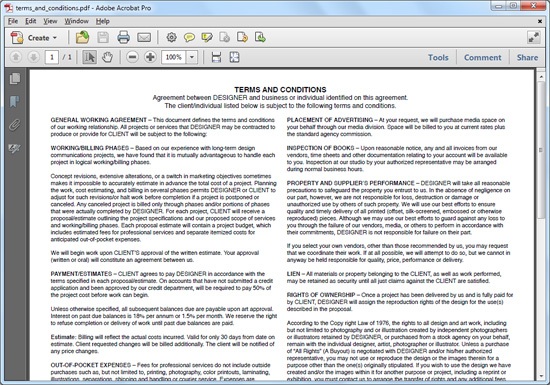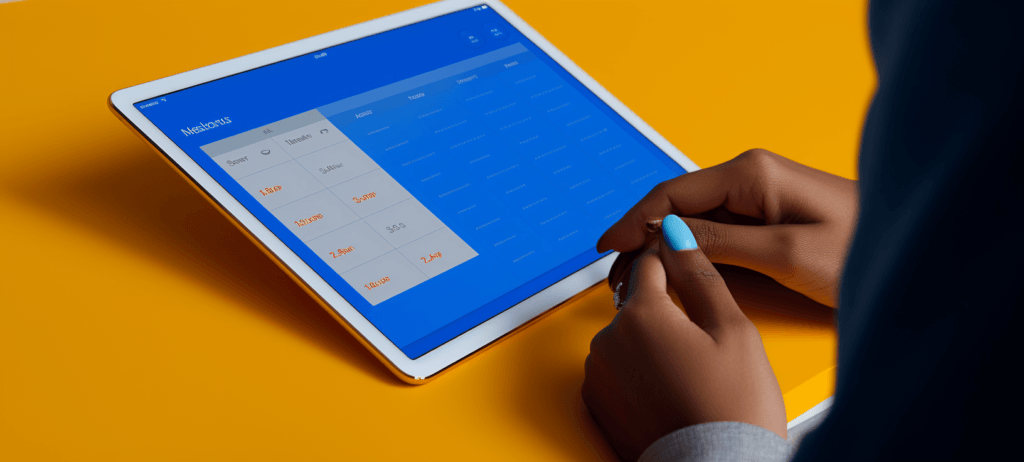- Home
- Blog
- Web Design 6 Tips for Effectively Dealing with Client Demands
6 Tips for Effectively Dealing with Client Demands
-
 8 min. read
8 min. read
-
 William Craig
William Craig CEO & Co-Founder
CEO & Co-Founder
- President of WebFX. Bill has over 25 years of experience in the Internet marketing industry specializing in SEO, UX, information architecture, marketing automation and more. William’s background in scientific computing and education from Shippensburg and MIT provided the foundation for MarketingCloudFX and other key research and development projects at WebFX.
 We’ve all had that client. The one who comes to you with a huge, complicated assignment and proceeds to be a gigantic pain in the rear about it. They do things like neglecting to answer their phone or email, change their minds a dizzying number of times about details in the design, all the while demanding that you do the impossible in a matter of minutes. Oh, and did they mention they expect you to do these things free of charge?
We’ve all had that client. The one who comes to you with a huge, complicated assignment and proceeds to be a gigantic pain in the rear about it. They do things like neglecting to answer their phone or email, change their minds a dizzying number of times about details in the design, all the while demanding that you do the impossible in a matter of minutes. Oh, and did they mention they expect you to do these things free of charge?
Clients like these are ubiquitous in the world of freelancing. There’s just no escaping them. Most freelance designers will work with at least one obnoxious client at some point in their careers.
They can suck the enjoyment and creativity right out of a project, and leave you wondering why you didn’t go to law school like your mother wanted you to. As horrible as things can get with a bad client, even a reasonable client can be a huge drain on your creative output as a designer. Rather than hassle you endlessly over insignificant details or attempt to art-direct you into a corner filled with ugly stock photos and animated GIFs, these clients will nonetheless have you struggling not to toss your computer out the window out of frustration and stress, with their restrictions and rules about what they want the design to look like.
But you have to listen to your clients. Keeping your clients happy is very important, and is an integral part of the job as a freelance designer.
1. Presentation is Key
You really should give the client what they’re asking for (well, sort of). You might be surprised at how much clients will allow you to get away with creatively. The key is how you present your work and your ideas. A mediocre idea that’s presented well can outperform a great idea that’s presented poorly. So, logic would tell us that a great idea that’s presented well is the winning combination to shoot for.
Spend a few moments to get inside your client’s head. Talk to them, listen carefully, figure out exactly how you need to package your ideas so that they will choose the option that’s best for their needs. Do your research and present your case clearly.
Support your design decisions with data. You could, for example, use usability research results to back up your choices. Yes, this takes a bit of extra effort, but it’s almost always worth it.
2. Be Clear About Out-of-Scope Work
There’s an easy way you can mitigate the problems caused by bad clients in a project. Some of the most frequent complaints given about design clients have to do with time. Designers gripe that their clients expect them to be time wizards, completing an impossible amount of work in the space of a day, or even mere hours.
Your client wants a rush job or extended labor, but doesn’t want to pay you for your extra time. So, what do you do? In your project contract (there should always be a contract between you and the client on any project you work on), include a clause which breaks down your expected compensation in the event of a rush job or any overtime work.
Make it very clear to them what they’re asking for and how difficult it is to accomplish, when they want you to redo the web page layout of the site to a two-column layout from a three-column layout, for example. If you’d rather not be stuck doing revision after revision, include a set number that you’ll allow each client to have. Be specific about the project’s deliverables and outcomes, and protect yourself by having a solid terms and conditions agreement in the event of out-of-scope work.
(Read Avoiding Unscoped Work from Unreasonable Clients for more strategies on how to sidestep this common issue.) When the guidelines and parameters for what you will and won’t do are set in stone, it does wonders for your peace of mind.
3. Use Contracts
If you don’t currently present every one of your clients with a working contract, now would be an excellent time to start. You can find free contract templates all over the Web that cover a wide scope of freelancing needs. (To get started, check out this list of free freelance design contract templates on Speckyboy.)  A terms and conditions agreement template (in PDF format).
A terms and conditions agreement template (in PDF format).
Source: Sessions College There are also several books that contain a wide assortment of contracts and legal forms specifically for designers. For example, check out Business and Legal Forms for Graphic Designers by Eva Doman Bruck and Tad Crawford. The optimal solution, however, is to simply consult with a contract attorney and let them draft your company’s business contracts.
If you’re intimidated at the thought of going to a lawyer, don’t be. I promise you, it’s not nearly as scary (or expensive) as being faced with a mountain of revisions from a client who isn’t legally obligated to pay you for your extra hard work.
4. Make Sure Your Portfolio Represents Your Business
You want to make sure that every single piece of work in your portfolio is tailored to the needs of your ideal client. In a lot of ways, this helps in making sure that you work with people that best matches the way you work, acting as a sort of filter and preventative medicine against clients that you might not work well with. If you’re trying to attract a higher-caliber client, you’ll need to adjust your portfolio accordingly.
If you work well with programmers/coders, have a portfolio that caters to this group of people. If you prefer dealing with small-sized businesses or startup companies as opposed to Fortune 500 companies, build a portfolio that is attractive and focused on the needs and wants of these businesses.
5. Realize Your Role as an Educator
Another important hat for designers to wear is that of the educator. We’ve all heard of the clueless design client who has no idea how to download an email attachment, much less understand the ins and outs of what’s required to complete their project. I’ve found that having patience with people and taking care to explain in detail what is expected from them has helped me avoid quite a few catastrophes in the past.
If you struggle with being able to communicate difficult concepts to your clients, consider making friends with a teacher, particularly one who teaches young children. It may sound silly, but people who work with children on a daily basis must develop a keen sense of how to package information in easy-to-consume ways — which words to use and which to avoid, where exactly to begin your explanation, even what tone of voice to use. Being able to communicate well can help defuse a situation that might otherwise get out of hand and end in frustration for both you and the client.
For more tips on this subject, read A Simple Guide on How to Effectively Talk to Clients.
6. Be an Underachiever
Allow me to share a personal story from my days as an in-house designer and content writer. I’m one of those people who can produce a large amount of quality work in a relatively short amount of time. Because of this tendency, I’ve found that freelancing suits me far better than in-house work.
Why? Firstly, it allows me to have near complete control of my own time. I’m no longer chained to a desk, droning away with lame busy work that has nothing to do with anything creative.
Secondly, and more importantly, it allows me to keep my freakishly prolific work ethic a carefully-guarded secret. When you produce a lot of work in a short amount of time, you tend to assume you’ll be rewarded handsomely for it. Unfortunately, most people figure out pretty quickly that that’s almost never what actually happens.
Most likely, you’ll just be loaded down with more work. Once people find out how fast you are, they’ll get spoiled and will start expecting the same level of output from you in the future. As many designers can confirm, it’s almost never the actual work that takes the most time.
You’re a designer. You know what you’re doing and how to use your tools to your best advantage. The biggest time drain is usually getting the client to be on the same page as you are in terms of the idea.
If you’re a freelancer, my crazy suggestion to you would be to slow down. Not “slacker” slow, but try not to let your clients in on your amazing superpowers. Impress your clients by under-promising and over-delivering.
What do you think about the balance between creativity and the crazy demands of clients? Has any strategy worked well for you in your career?
Related Content
Addison Duvall is the author of Food Identities, a blog that explores the crossroads of food, design, art, and culture. she’s written some things, designed other things, and eaten a whole lot of food. She lives in Los Angeles.
-
 President of WebFX. Bill has over 25 years of experience in the Internet marketing industry specializing in SEO, UX, information architecture, marketing automation and more. William’s background in scientific computing and education from Shippensburg and MIT provided the foundation for MarketingCloudFX and other key research and development projects at WebFX.
President of WebFX. Bill has over 25 years of experience in the Internet marketing industry specializing in SEO, UX, information architecture, marketing automation and more. William’s background in scientific computing and education from Shippensburg and MIT provided the foundation for MarketingCloudFX and other key research and development projects at WebFX. -

WebFX is a full-service marketing agency with 1,100+ client reviews and a 4.9-star rating on Clutch! Find out how our expert team and revenue-accelerating tech can drive results for you! Learn more
Make estimating web design costs easy
Website design costs can be tricky to nail down. Get an instant estimate for a custom web design with our free website design cost calculator!
Try Our Free Web Design Cost Calculator


Web Design Calculator
Use our free tool to get a free, instant quote in under 60 seconds.
View Web Design CalculatorMake estimating web design costs easy
Website design costs can be tricky to nail down. Get an instant estimate for a custom web design with our free website design cost calculator!
Try Our Free Web Design Cost Calculator




